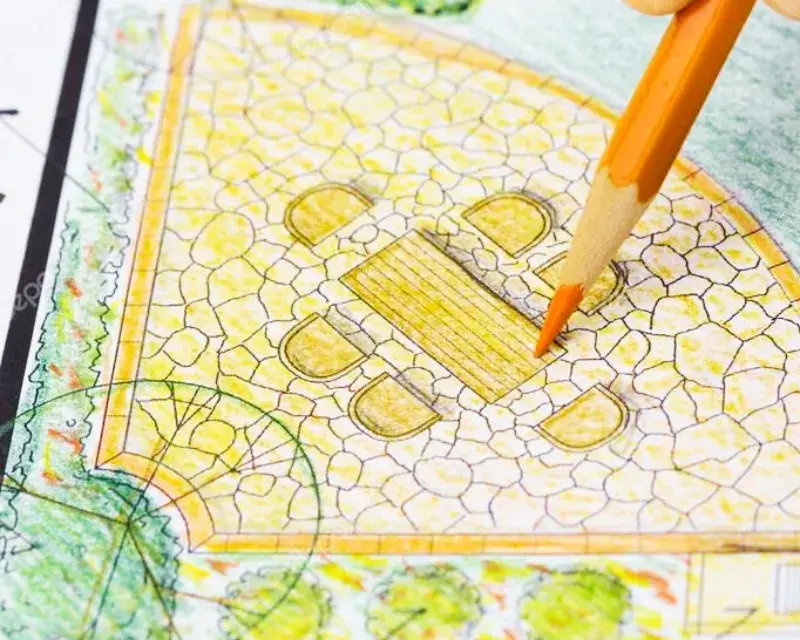In today’s rapidly changing world, the transformation of landscapes through innovative engineering designs is more crucial than ever. From urban parks to rural developments, the integration of modern engineering techniques with creative design principles can revolutionize how we interact with our surroundings. Engineering consultation plays a pivotal role in this transformation, bringing expertise and vision to create sustainable, functional, and aesthetically pleasing landscapes.
The Role of Engineering Consultation in Landscape Transformation
Engineering consultation bridges the gap between conceptual design and practical implementation. Consultants bring a wealth of knowledge in various fields such as civil engineering, environmental science, and urban planning, ensuring that every aspect of a landscape project is meticulously planned and executed. Here’s how engineering consultation contributes to landscape transformation:
1. Comprehensive Planning and Design
– Engineering consultants start with thorough site assessments, considering topography, soil conditions, climate, and existing vegetation. They collaborate with landscape architects to create detailed plans that integrate natural elements with human-made structures.
2. Sustainable Solutions
– Sustainability is at the forefront of modern landscape design. Consultants develop eco-friendly solutions that minimize environmental impact, such as using native plants, implementing water conservation techniques, and promoting biodiversity.
3. Innovative Techniques
– Advanced engineering techniques, including green infrastructure, permeable pavements, and energy-efficient lighting, are incorporated to enhance functionality and sustainability. These innovations not only improve the aesthetics but also contribute to long-term environmental health.
4. Regulatory Compliance
– Navigating regulatory requirements is a complex aspect of landscape projects. Engineering consultants ensure compliance with local, state, and federal regulations, avoiding legal complications and ensuring the project progresses smoothly.
5. Project Management
– Effective project management is essential for the successful transformation of landscapes. Consultants oversee the entire process, from initial planning to final implementation, ensuring that the project stays on schedule and within budget.
Key Elements of Innovative Engineering Designs in Landscapes
Transformative landscape projects incorporate several key elements that reflect innovative engineering designs:
1. Green Infrastructure
– Green infrastructure includes features like green roofs, rain gardens, and urban forests that manage stormwater, reduce heat islands, and improve air quality. These elements integrate seamlessly with the urban fabric, providing both functional and aesthetic benefits.
2. Smart Irrigation Systems
– Efficient water management is crucial in landscape design. Smart irrigation systems use sensors and weather data to optimize watering schedules, reducing water waste and promoting healthy plant growth.
3. Sustainable Materials
– The use of sustainable materials, such as recycled concrete, reclaimed wood, and low-impact construction methods, reduces the environmental footprint of landscape projects. These materials are chosen for their durability and ecological benefits.
4. Interactive and Inclusive Spaces
– Modern landscapes are designed to be interactive and inclusive, catering to diverse user groups. Features like accessible pathways, interactive water features, and community gardens encourage social interaction and engagement.
5. Renewable Energy Integration
– Integrating renewable energy sources, such as solar panels and wind turbines, into landscape designs not only reduces carbon footprint but also demonstrates a commitment to sustainability. These installations can power lighting, irrigation systems, and other landscape features.
Case Studies: Transformative Landscape Projects
Several landmark projects highlight the impact of innovative engineering designs in transforming landscapes:
1. The High Line, New York City
– This elevated park, built on a former railway track, is a testament to innovative landscape transformation. Engineering consultants played a crucial role in converting the industrial structure into a vibrant green space, integrating sustainable practices and enhancing urban biodiversity.
2. Gardens by the Bay, Singapore
– A marvel of modern engineering and design, Gardens by the Bay features towering Supertrees, climate-controlled conservatories, and extensive green spaces. The project showcases how engineering consultation can create iconic landscapes that blend beauty with sustainability.
3. Millennium Park, Chicago
– This urban park is renowned for its innovative use of space and sustainable design elements. Features like the Crown Fountain and the Lurie Garden demonstrate how engineering consultants can transform urban areas into engaging and sustainable public spaces.
Future Trends in Landscape Engineering
The future of landscape engineering is poised to embrace several emerging trends that will further transform how we design and interact with our surroundings:
1. Climate-Resilient Landscapes
– As climate change impacts become more pronounced, designing landscapes that can withstand extreme weather events and changing environmental conditions will be crucial. This includes flood-resistant parks, drought-tolerant gardens, and resilient urban forests.
2. Technology Integration
– The integration of technology, such as IoT sensors, drone monitoring, and data analytics, will enhance the management and maintenance of landscapes. These technologies provide real-time insights into soil health, plant growth, and water usage, optimizing landscape performance.
3. Biophilic Design
– Biophilic design principles focus on creating spaces that connect people with nature. This approach enhances mental and physical well-being, making it a key consideration in future landscape projects. Elements like natural light, water features, and green walls will become more prevalent.
4. Community-Centric Design
– Engaging local communities in the design and maintenance of landscapes fosters a sense of ownership and pride. Future projects will prioritize community input, ensuring that landscapes meet the needs and preferences of those who use them.
5. Circular Economy Practices
– Implementing circular economy principles in landscape design involves reusing and recycling materials, reducing waste, and creating regenerative systems. This approach minimizes environmental impact and promotes sustainability.
Conclusion
The transformation of landscapes through innovative engineering designs is a dynamic and evolving field. Engineering consultation provides the expertise and vision necessary to create sustainable, functional, and aesthetically pleasing environments. By embracing advanced techniques, sustainable practices, and community engagement, engineering consultants can turn ordinary spaces into extraordinary landscapes.
As we look to the future, the integration of new technologies, climate resilience, and biophilic design will continue to shape the way we approach landscape transformation. With the guidance of skilled engineering consultants, we can create landscapes that not only meet the needs of today but also pave the way for a sustainable and vibrant future.
—
For your next landscape project, consider partnering with experienced engineering consultants who can provide the expertise and innovative solutions needed to transform your vision into reality. Achieve stunning and sustainable landscapes that enhance both the environment and the community.






